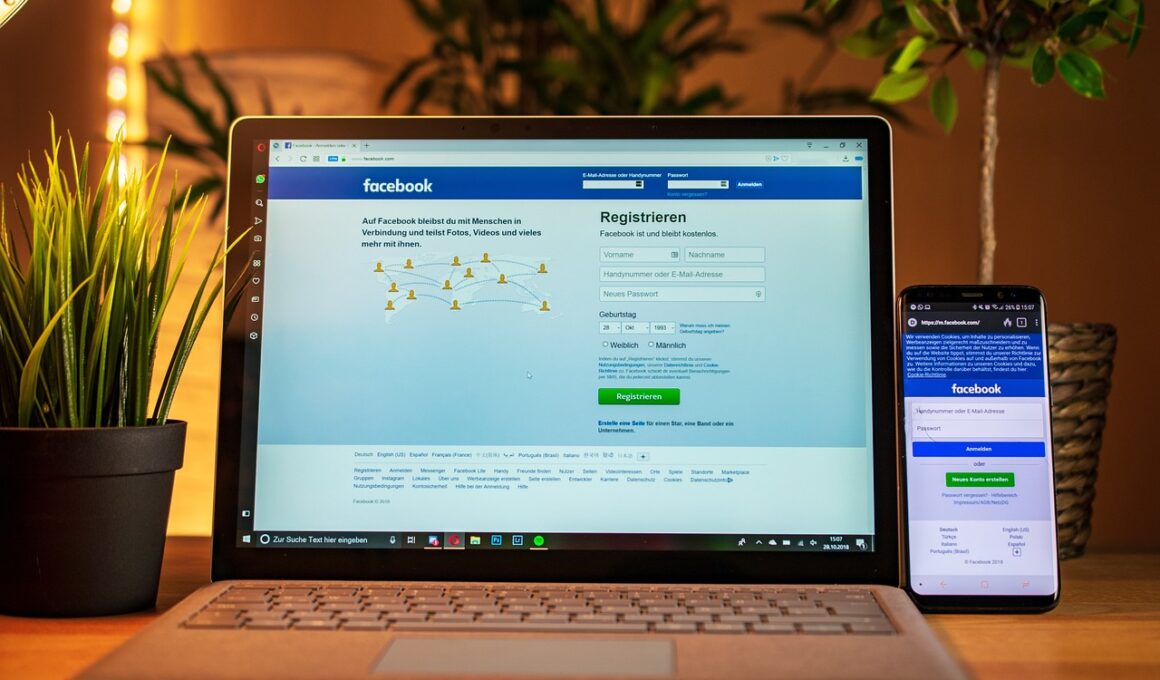The Role of Influencers in Social Media Crisis during Hacktivist Campaigns
In today’s digital age, social media serves as a powerful tool for communication and engagement. However, it also poses significant challenges, especially when crises emerge due to hacktivist attacks. Influencers have a unique role during these tumultuous periods by leveraging their reach and credibility. Their ability to disseminate information rapidly can either quell panics or exacerbate chaos. Understanding the psychology behind influencer recommendations becomes essential for brands previously unequipped to handle such crises. During hacktivist campaigns, the targeting of organizations can lead to severe reputational damage if not managed effectively. This is where influencers come into play; as trusted figures, their perspectives can help navigate the complexities. They craft narratives which align with the audience’s expectations, reassuring consumers amidst the uproar. When brands align with influencers who maintain authenticity, the positive reception of messages amplifies the communication strategy. Additionally, the choice of influencer has significant implications on how the public perceives on-brand messages. Certain influencers may resonate more with certain demographics, providing crucial support for targeted engagement strategies over a crisis.
Influencer Strategy during a Hacktivist Crisis
Establishing an influencer strategy during a social media crisis stemming from a hacktivist attack is not a mere suggestion; it is essential for survival. Companies should identify key influencers that reflect their mission and values while emphasizing their authenticity. A well-planned strategy involves analyzing the influencer’s previous engagements, audience demographics, and overall reputation. This helps in determining which influencers might amplify the crisis response effectively. When a crisis arises, initiating contact with influencers ahead of the public announcement allows time for preparation. Influencers can tailor their messages to align with the brand’s crisis communication plan. This fosters a united front that reassures consumers while mitigating damage. During these times, influencers act as intermediaries, translating brand messages into relatable language. By sharing timely updates and context, they address potential concerns from the audience, thereby curbing misinformation. Brands should also offer guidelines to influencers on how to communicate their messages efficiently. Furthermore, continuous monitoring of social media platforms ensures that targeted messages reach the desired audience without further escalation. A solid influencer partnership can serve as a buffer against negative sentiment.
The role of influencers extends beyond mere message dissemination; they are storytellers during tumultuous times. During a crisis triggered by hacktivist activities, influencers are responsible for crafting narratives that resonate with the brand’s audience. Through authentic storytelling, they highlight the brand’s commitment to integrity and transparency. Furthermore, collaborating with various influencers enables brands to diversify the narratives they present. A single perspective might not adequately reach different segments of the audience; therefore, it is critical to adopt a multi-faceted approach. Influencers, using video, blogs, or social media posts, can help depict a brand’s human side. They can communicate the emotional impact of the crisis alongside factual updates, giving a human element to the organizational response. Additionally, influencers can lead discussions, fostering community dialogue around the issues raised by hacktivist activities. Their ability to engage with audiences can facilitate discussions that both educate and inform. By promoting a sense of empathy, they can encourage dialogue around constructive ways to tackle the implications of the crisis, ultimately enhancing the brand’s image as a responsible entity.
The Importance of Authenticity and Trust
In a social media crisis, particularly those provoked by hacktivist groups, authenticity and trust become paramount for influencers. Influencers who have previously established strong relationships with their audience can reassure them effectively. In times of uncertainty, audiences are more likely to trust influencers whose previous content aligns with their values. Therefore, brands should prioritize engaging influencers who have built trust and credibility within their respective niches. This choice enhances the campaign’s ability to resonate positively with the audience. Additionally, influencers should maintain a transparent dialogue regarding their partnership with brands, allowing followers to grasp the message’s context. This transparency can mitigate skepticism concerning the brand’s intentions amidst a crisis. Moreover, authenticity also involves influencers sharing their personal thoughts regarding the situation. Real-time reactions allow audiences to feel connected and understand the gravity of the situation being reported. By maintaining an authentic stance, influencers create a sense of partnership with their audience in navigating the crisis, fostering resilience and encouraging constructive interactions. Therefore, emphasizing authenticity throughout the influencer collaboration process will build long-term trust with the audience.
Monitoring the effectiveness of influencer-led communications is another critical aspect during hacktivist-induced crises. Brands must implement analytical tools to assess the impact of influencers on audience sentiment over time. By tracking engagement metrics, such as shares, likes, comments, and overall reach, companies can gauge whether their strategies are effective. It’s essential to analyze whether the influencers’ messages resonate positively or negatively based on consumer responses, allowing for adjustments in real-time. Also, the analytics derive insights related to audience demographics, enabling brands to refine their communication efforts further. Additionally, influencers should provide feedback regarding audience reactions, which may guide brands in understanding prevalent sentiments and expectations. Continuous analysis during a crisis ensures that brands remain agile and adaptable, allowing for necessary pivots in their approach. This engagement helps in crafting better messages that resonate more effectively with the community. Furthermore, brands can then provide influencers with updated context based on ongoing developments. This frequent communication will foster an atmosphere of collaboration that leads to more strategic decision-making around social media messaging.
Post-Crisis Strategy: Rebuilding Brand Image
Once a social media crisis arising from hacktivist attacks has subsided, organizations need to pivot towards a post-crisis strategy that emphasizes rebuilding brand image. Influencers can play an essential role during this phase by continuing their partnerships with the brand and crafting narratives focused on recovery and growth. Brands that leverage ongoing influencer relationships signal to their audience that they are committed to transparency and authenticity following challenging events. Additionally, influencers can share their experiences of how the brand is actively addressing the concerns raised during the crisis, thus reinforcing the message of accountability. Engaging these trusted figures will help demonstrate the brand’s commitment to improvement and revitalization. This post-crisis phase can also present an opportunity to highlight new initiatives, products, or changes implemented as a result of the crisis. Influencers, through their platforms, can create buzz around these developments, rejuvenating consumer interest and trust. Ultimately, this stage’s goal is to facilitate a smooth transition from crisis to recovery, showcasing a brand that learns, adapts, and remains committed to its audience. Building a positive narrative can lead to stronger brand loyalty moving forward.
Influencers’ contributions during social media crises originating from hacktivist actions underline the complex interdependence between brands and public sentiment. The necessity for brands to quickly identify and engage appropriate influencers only becomes more apparent during these crises. Through collaboration, trust, and shared values, influencers can effectively work to mitigate damage while simultaneously fostering an environment of open dialogue. When brands and influencers form strategic alliances that instill confidence among consumers, they create a foundation that may withstand future challenges. Furthermore, as the digital landscape continues to evolve, brands must remain vigilant in their approach to influencer partnerships, understanding that their responsibilities extend beyond mere marketing. This means recognizing their role in social responsibility and community engagement. By ensuring influencers advocate for positive changes and social issues, brands can create a lasting impact that transcends challenges. Ultimately, the value brought by influencers during those trying times reinforces the power of relationships in shaping the narrative around brand crises. This reflection encourages brands to invest in long-term partnerships that can effectively lead through tumultuous periods, ensuring a more resilient presence in the digital landscape.


